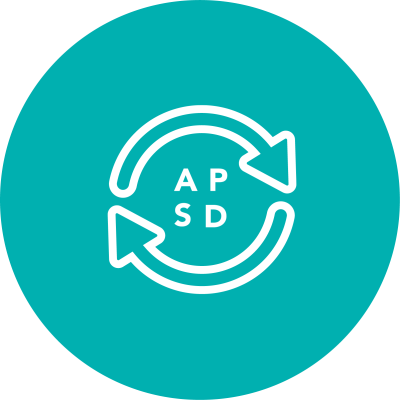
The Model for Improvement is a simple tool for accelerating improvement and is used widely in healthcare settings across the world. The model has two parts:
- Three questions, which can be answered in any order
- The plan-do-study-act (PDSA) cycle to test changes in real work settings – guides the test of a change to determine if the change is an improvement
These videos from the Institute for Healthcare Improvement provide further information about the Model for Improvement and driver diagrams:
- The Model for Improvement on a Whiteboard | IHI – Institute for Healthcare Improvement
- Driver Diagrams | IHI – Institute for Healthcare Improvement
The Model for Improvement Explained
What are we trying to accomplish? (Aim)

Setting an aim is important to focus your team on the same goal and to measure whether you have done what you set out to do. Your aim should outline:
- What you are trying to accomplish
- By how much?
- By when?
- For whom (or what system)?
- By who?
How will we know that a change is an improvement? (Measurement)

Measurements help us to understand if we have made an improvement. They give us a balanced view of our progress towards our aim, check the impact we’re having on the rest of the system (including unintended consequences) and to share data to enable better decision-making.
It’s a good idea to think about the data you already have, to measure against your aim early on in your project.
- Is the data already collected?
- Can you get access to it in a way that is useful to your project?
- If it doesn’t exist, who will collect the data and how will they do it?
What change can we make that will result in an improvement? (Change ideas)

We can look for change ideas from different people and places. Ask the people who are affected by the system, process or pathway you are trying to improve.
- Staff who work in the system (subject-matter experts)
- Patients or service users (which may include other staff) who are affected by the change you are making
Plan-Do-Study-Act (PDSA) Cycles

PDSA cycles allow us to test changes by starting small and making adjustments as we go. We learn from what works and what doesn’t, using successive cycles to scale up, celebrating successes and building on weaker aspects.
Plan
With your team develop a plan to test your change idea. Think about:
- Exactly what is going to be tested – What is included? What is excluded?
- Hypothesis – what do you predict will happen?
- Actions to complete and who will do them
- When the test will take place and for how long
- Who will be involved (make sure they know what’s expected)
- Who will collect data to measure success – if you don’t have baseline data (something that shows how things are now), collect this before making a change
- Communication is critical – don’t just send one email and think this is enough
Remember to communicate regularly as a team.
Do
Use your plan to carry out the test at the agreed time and to the agreed definitions. If anyone has thoughts about how to improve on the idea being tested, make a note and save them for the next PDSA cycle.
Make sure the data for your measurement is collected. Hold debrief meetings during the test to deal with any unexpected issues as they arise and to review the data collected so far and what it tells us. It’s important to document your observations and anything unexpected during your test – this will help with the next step – study.
Study
Review your measurement data and observations, which you collected during the test (Do). Meet and discuss with your team. Collect feedback from everyone involved (positive and negative), adding to the learning from your debriefs during the “Do” phase. Ask everyone for their opinions about what could be improved.
Think about:
- What does the data show?
- Did it go as expected? Compare with your predictions (hypothesis)
- What did you learn?
- Does your data show an improvement? Compare to the data you collected before the change to understand what impact you’ve had
Act
Once you’ve completed a test cycle and reviewed your outcomes – make a decision on what happens next. You can decide with your team whether to adapt, adopt or abandon your change idea:
- Adapt – improve on the idea and start another PDSA cycle, changing the plan before testing again
- Adopt – keep going with the test, either in another PDSA cycle or by making this “business as usual”
- Abandon – stop the test and try something else (but don’t give up!)
Now you can plan for the next test or implement your change into everyday work.
There are tools and information to help you share your lessons learned and implement a sustainable change. To learn more, click on the ‘Share’ link below.
